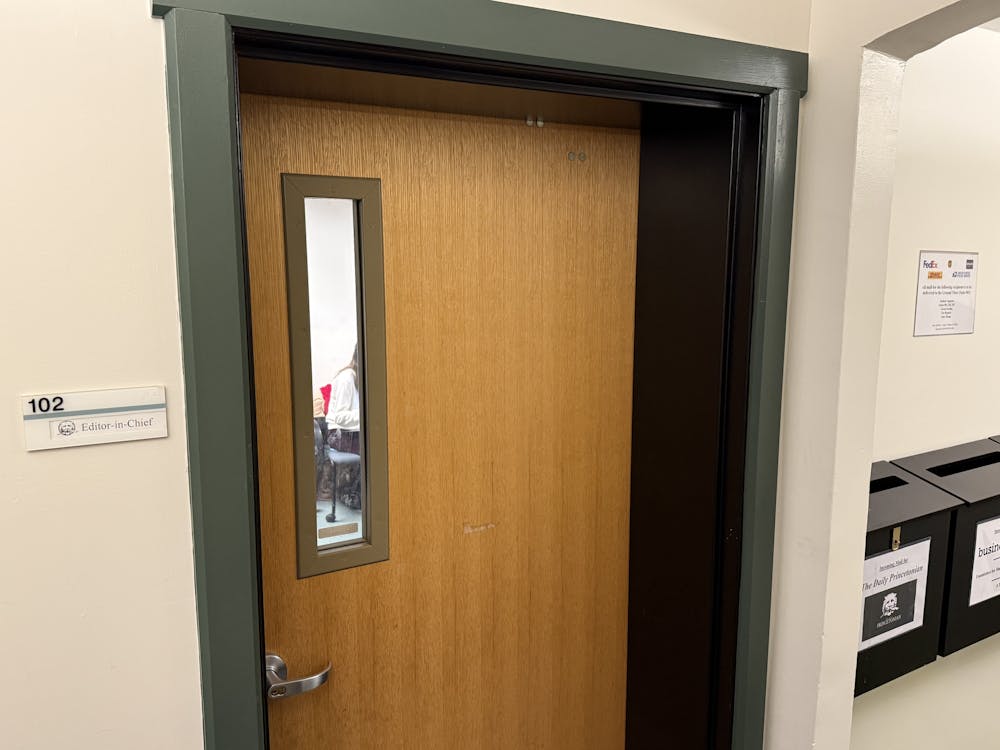A good number of people I’ve interviewed about the mandatory meal plan here at Princeton seem to hold this sentiment. “Uh, I don’t really eat in the dining hall anymore,” one girl told me after surreptitiously glancing around. “It’s not like the food is super bad or anything — I just don’t like it.”
It’s a commonly accepted truism that college dining hall food isn’t that great. I’m sure there’s even a list out there somewhere that gives you the colleges with the worst food ever. No, the real problem is with the one word that precedes “meal plan” for freshmen and sophomores here. That word is “mandatory.”
Princeton is one of the few colleges to require its students to purchase a meal plan for both freshman and sophomore years. The reasons behind this anomaly can only be puzzled at. Did they fear underclassmen would starve themselves without buying a meal plan? Would students only feel compelled to eat at the dining hall if that was the sole place they could go? The motivations remain a mystery. One thing is clear, however: In comparison to other schools, the Princeton meal plan is substandard, lacking many of the options and perks of plans at other schools.
Meal plans at most other colleges are structured around the two paramount demands of students: flexibility and convenience. At Yale, the meal plan adheres to those demands, as students can eat not only in the dining halls but also at a number of restaurants and cafes around campus. Some are university-run but most are not, including both local establishments and favored quick bites like Panera. Other comparable small, private universities also allow students to have their meals at local establishments, and even larger, public universities like the University of Virginia have similar policies worked into their meal plans. So this is obviously a pretty common feature of college plans. The only question is why Princeton hasn’t incorporated it into its meal plans.
Dining dollars are also a common concept that Princeton seems to have missed the memo on. Though the University offers Paw Points, these are something that you must pay for on the side. If you purchase a meal plan at many colleges in the United States (voluntarily or under duress), your plan comes along with a certain number of dining dollars. This is money that you can spend on food and beverages at any pre-certified establishment around campus. For college students, who normally don’t eat regular meals and snack a lot, this is perfect. Want to stop for ice cream or frozen yogurt? How about picking up a breakfast bar and a Gatorade at the campus convenience store? Dining dollars have you covered in most instances.
If Princeton is in last place in the meal plan race, Dartmouth is definitely in first. It has the best plan of all, which is no meal plan at all. All dining at Dartmouth is a la carte, which is easily the best way to go for food in colleges. It empowers you to make your own decisions concerning your diet and decide where and what you want to eat. You feel no unnecessary pressure or guilt to eat at a dining hall to use up your swipes. No, at Dartmouth, the school gives its students this thing called choice, which is something that Princeton bestows upon its students in practically every other aspect of life.
If Princeton students are forced to purchase a meal plan freshman and sophomore years, the plans should measure up to those offered at other schools, particularly other Ivies. Revamping a meal plan here at Princeton to offer meals at alternative locations and dining dollars isn’t asking for some radical, unprecedented change. These are common features at many colleges across the country. The fact that Princeton doesn’t offer any of these features is ultimately why, when it comes to meal plans, Dartmouth, and other Ivies, do it better.
Kelsey Zimmerman is a freshman from Glen Allen, Va. She can be reached at kzimmerm@princeton.edu.







